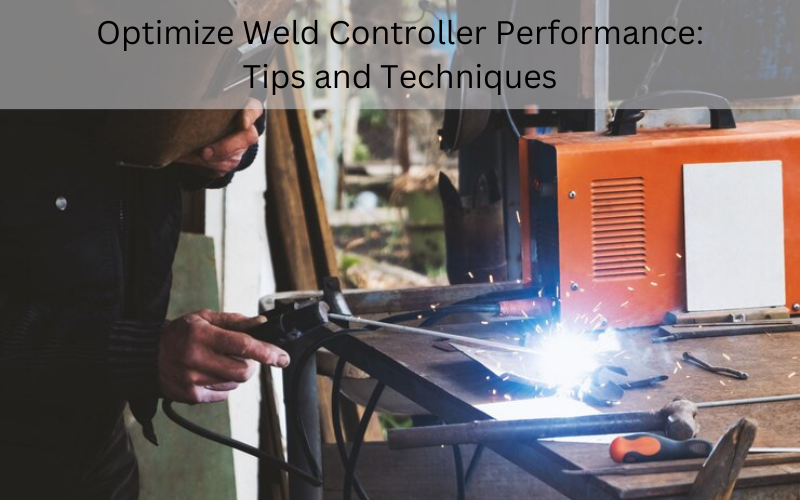In the world of welding, achieving optimal performance from your weld controller is crucial for ensuring the quality and efficiency of your welding operations. A well-optimized weld controller can improve weld quality, reduce downtime, and cost savings. In this post, we will delve into various tips and techniques to help you optimize the performance of your weld controller.
Understanding the Role of a Weld Controller
Before we dive into optimization strategies, let’s first understand the fundamental role of a weld controller in the welding process.
What is a Weld Controller?
A weld controller is a device that monitors and controls various welding parameters such as voltage, current, and wire feed speed. It acts as the brain of the welding system, ensuring that the welds are consistent and of high quality.
Why is Weld Controller Optimization Important?
Optimizing a weld controller is crucial because it directly impacts the quality of the welds, production efficiency, and overall operational costs. A poorly optimized weld controller can lead to defects, rework, and increased downtime.
Importance of Weld Controller Optimization
Optimizing your weld controller is essential for several reasons:
Improved Weld Quality
A well-tuned weld controller helps achieve precise control over welding parameters, resulting in high-quality welds with minimal defects.
Reduced Downtime
Optimal performance minimizes the likelihood of equipment failures and breakdowns, minimizing downtime and production losses.
Cost Savings
Optimizing resource utilization, encompassing consumables and energy, can result in substantial long-term cost reductions.
Tips for Weld Controller Optimization
Now, let’s explore some practical tips and techniques to optimize your weld controller:
Regular Maintenance
Regular maintenance is the cornerstone of weld controller optimization. Perform routine checks, clean the equipment, and replace worn-out components promptly.
Calibration
Calibrate your weld controller regularly to ensure it accurately measures and controls welding parameters. It helps maintain consistency in your welding process.
Parameter Adjustment
Fine-tune welding parameters such as voltage, current, and wire feed speed to match the specific requirements of your welding application.
Monitor and Analyze Data
Utilize data logging and analysis tools to monitor the performance of your weld controller. Identify trends and anomalies to make informed adjustments.
Software Updates
Keep your weld controller’s software up to date. Manufacturers often release updates that improve performance and address potential issues.
Electrode and Consumable Selection
Choose the suitable electrodes and consumables for your welding process. The quality of these materials can significantly impact weld performance.
Training
Invest in training for your welding operators to ensure we understand how to use the weld controller effectively.
Environmental Factors
Consider environmental conditions such as temperature and humidity, as we can affect the performance of your weld control. Implement measures to control these variables.
Troubleshooting
Develop a troubleshooting protocol to quickly identify and address issues that may arise during welding operations.
Continuous Improvement
Embrace a culture of continuous improvement. Regularly review and refine your welding processes to optimize performance further.
Techniques for Advanced Optimization
Consider these advanced techniques to take our weld controller optimization to the next level.
Weld Profile Analysis
Perform a detailed analysis of weld profiles to identify irregularities or inconsistencies. This analysis can help pinpoint issues that are not apparent during standard monitoring.
Integration with Robotics
Integrate your weld controller with robotic systems for automated welding. It improves precision and enhances productivity by reducing the need for manual labour.
Real-time Feedback Systems
Implement real-time feedback systems that allow the weld controller to make instantaneous adjustments based on welding conditions. It ensures constant adaptability and consistent weld quality.
Operator Training
Invest in operator training to ensure personnel are well-versed in effectively using the weld controller. Knowledgeable operators can maximize our capabilities.
Energy Efficiency
Consider energy-efficient settings and features to reduce power consumption, leading to cost savings and a smaller environmental footprint.
Conclusion
Optimizing the performance of your weld controller is a critical factor in achieving top-notch welding results. By following the tips and techniques outlined in this post, you can ensure that your weld controller operates at its best, leading to improved weld quality, reduced downtime, and cost savings. It would be best to contact Proteus Industries Inc. Remember that a well-maintained and finely-tuned weld controller is the foundation of successful welding operations.



